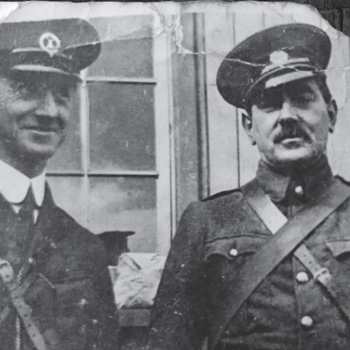
This mapping project is a part of the Limerick Museum’s plan for marking centenary events for 2022. This resource is part of the Limerick City and County Council Decade of Centenaries Programme which is organised by Limerick City and County Library Service and funded by the Department of Tourism, Culture, Arts, Gaeltacht, Sport and Media under the Decade of Centenaries 2012-2023 initiative.
This project is part of Limerick Museum’s plan for marking 2022 centenary events and was created by William T O’Neill on commission from Dr Matthew Potter, Curator Limerick Museum. It forms part of the Limerick City and County Council Decade of Centenaries Programme which is organised by Limerick City and County Library Service and funded by the Department of Tourism, Culture, Arts, Gaeltacht, Sport and Media under the Decade of Centenaries 2012-2023 initiative.
The Revolutionary Map of Limerick (1913-24) seeks to pinpoint the locations in Limerick City and County of events pertaining to one of the most important decades in Irish history.
Limerick was a major theatre of activity during the Irish Revolutionary period. Both the city and county produced an array of figures who were willing to train, fund, and fight for Irish republicanism. In addition, there was also the Limerick Soviet, one of the most extraordinary events of the period, a general strike in which city’s citizens governed their own affairs independent of British rule. This strike tactic was employed across Limerick in the years after this.
Limerick also had a disproportionately large number of both police and army barracks, garrisoned by the Royal Irish Constabulary (including the Black and Tans), the British Army, and the Auxiliaries. In addition, Limerick was the scene of the Dromkeen Ambush (1921), the most successful ambush by the IRA outside of Cork, during the entire War of Independence. The Civil War engulfed the nation in 1922-23, and all eyes were looking at Munster, which was the scene of major engagements, such as the Battle of Limerick City and the Battle of Kilmallock.
The information included is based on the work and research of Tom Donovan, Sean Gannon, Michael Hopkinson, Jennifer Levey, Helen Litton, Des Long, Mike Maguire, Sinead McCoole, John O’Callaghan, Padraic O’Farrell, Eunan O’Halpin, William T O’Neill, Pádraig Óg Ó Ruairc, Matthew Potter, Des Ryan, Sharon Slater and Thomas Toomey. The project also used newspapers such as the Irish Times, Freeman’s Journal, Limerick Leader, and Limerick Chronicle.
The Revolutionary Map is being constantly improved and updated. To begin with, the project currently focuses exclusively on events within Limerick itself, and Limerick people who fought or were killed outside the city and county boundaries of Limerick have not yet been included. Please contact Limerick Museum at museum@limerick.ie if you have any edits that you wish to make to the map, including pictorial and other evidence where appropriate.
The Civil War Maps focuses on the operations and movements as opposed to the deaths, as there are no exact locations (and, in some cases, the dates) of those who were killed or wounded during the engagements of the Civil War.
We have compiled a list of the dead and injured of the Battle of Limerick for download.